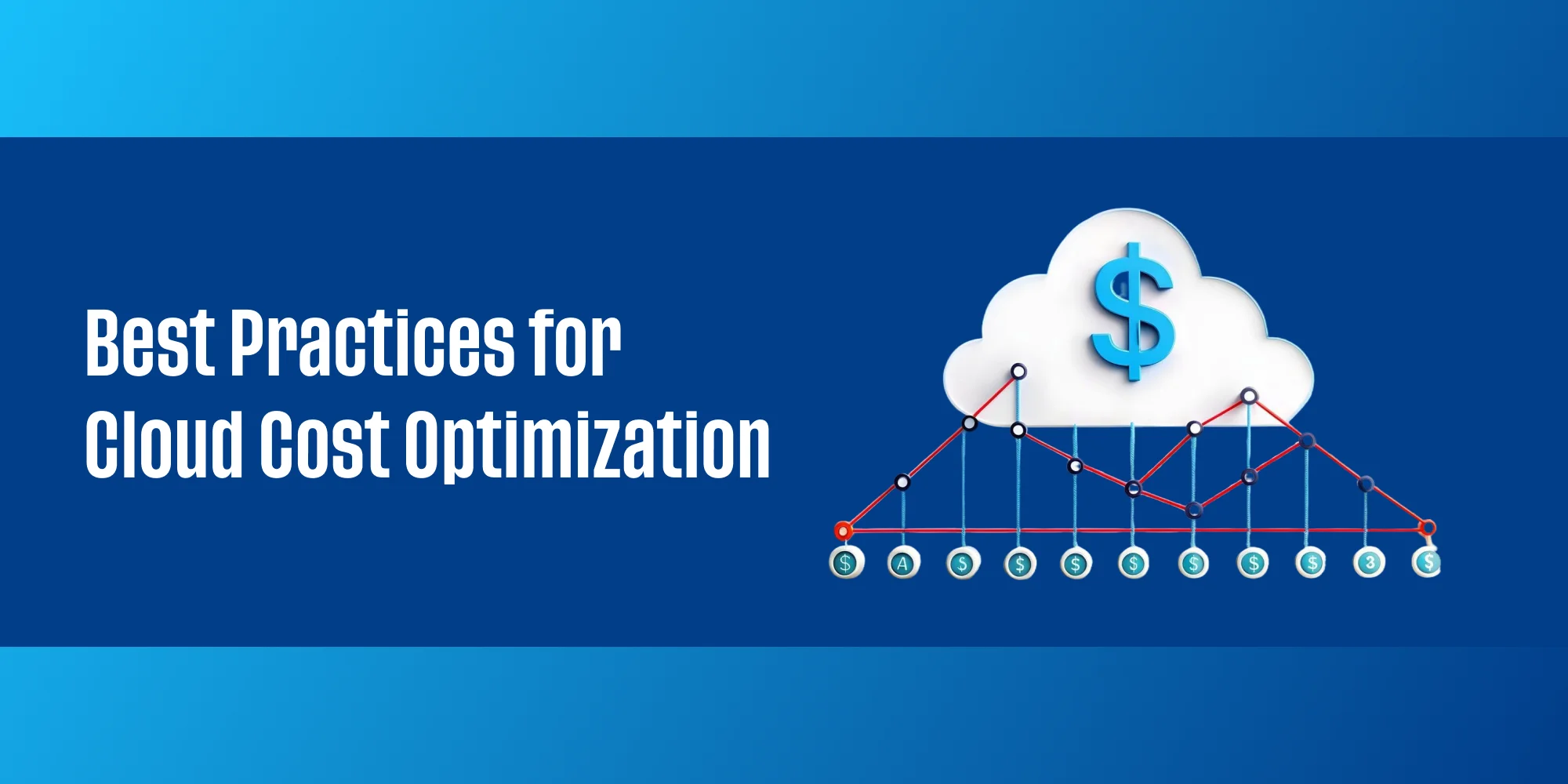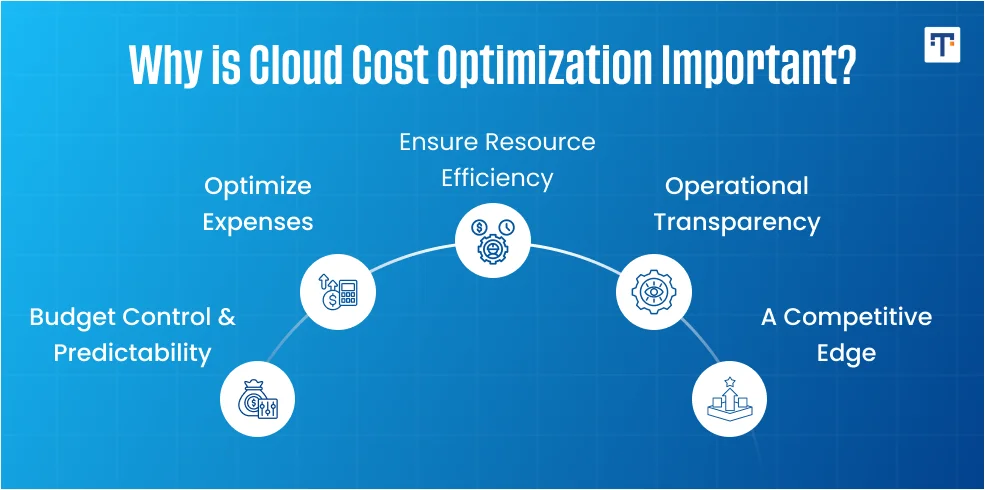Necessary Always Active
Necessary cookies are required to enable the basic features of this site, such as providing secure log-in or adjusting your consent preferences. These cookies do not store any personally identifiable data.
|
||||||
|
||||||
|
||||||
|

Statistics show that 94% of enterprises use cloud computing in 2025. Yet, about 90% of IT leaders struggle to manage cloud costs effectively. Over the years, B2B companies have leveraged the cloud via traditional and fixed budgets. However, conventional methods are hitting a wall due to unpredictable incidents, ranging from unexpected scale-ups to stringent regulations.
The rise in AI and ML may prompt some companies to increase their spending limits. If a company scales up unexpectedly, it leads to overspending or poor resource utilization.
In this guide, you will discover the best tools and techniques to adapt to upcoming challenges. Each member of your team can work with a FinOps mindset. Also, you will learn how to optimize cloud computing costs without sacrificing performance and security.
Cloud operations have become pivotal for efficiency among European companies. As businesses seek to optimize costs and enhance scalability, these trends are transforming the management and allocation of cloud resources across the region. Here are six current trends that influence digital operations.
In Europe, global spending on cloud services continues to increase annually. By 2026, the market is expected to reach $947.3 billion. This increase calls for effective cloud financial management, which can be achieved by implementing cloud FinOps.
Artificial Intelligence and Machine Learning are fast becoming a central force in 2025. More businesses are gravitating towards building AI-driven products, applications, and services. The adoption of AI leads to an increase in demand for more robust cloud infrastructure, ultimately resulting in higher cloud costs.
Companies are quickly switching to multiple cloud providers. Two key challenges that come with this switch are interoperability and the need for support across multiple platforms. In 2025 and beyond, companies will incur additional cloud costs to address these challenges.
The latest EU Data Act took effect in September 2025. This is one of the numerous regulations that directly influence cloud operations. These regulations aim to enforce strict data protection measures. Therefore, companies are looking towards sovereign cloud solutions. Data sovereignty provides complete control over data while maintaining strict security.
Another trend to watch in Europe is the adoption of sustainable cloud practices. GreenOps is a practice that aims to minimize environmental carbon footprint as much as possible. With the increasing use of cloud computing, there is a growing demand for green cloud computing. The goal of every company is to minimize its environmental footprint as much as possible.
Changes in pricing models affect cloud spending for small and large enterprises. Cloud providers are adjusting pricing models for various reasons, including the need for sovereign cloud investments. In the near future, pricing will be more transparent using a pay-as-you-go model.
While traditional budgeting has helped to manage Cloud expenses for many years, it is beginning to fail.

In traditional data centers, expenses were predictable. Cloud operations are more elastic, leading to unexpected spending if poorly managed. Below are six core strategies for B2B cloud cost management.
One of the most crucial strategies to adopt is FinOps (Financial Operations). FinOps creates a cost culture transformation that involves every engineer, team lead, or finance personnel in cost management.
Real-time expense tracking helps to reduce resource wastage. Companies can implement automation to send alerts when they are close to cloud spend limits.
Companies can avoid resource wastage by creating a schedule to halt idle infrastructure services. If this is unachievable, opt for serverless or hybrid models. Companies that offer cross-country services can choose to store data within their country to reduce data egress fees.
Traditional budgeting relies solely on previous data usage. Advanced methods allow you to predict future trends using AI predictive models. For example, you can plan for your product to experience up to 3x the expected sales.
Cloud vendors have a range of pricing models to choose from. While some allow you to pay as you go, others offer discounts for longer subscriptions. Ensure you understand every aspect of SLA, from inter-zone transfers to subscriptions and licensing fees.
Companies that fail to make provisions for regulations often end up with overruns to manage risks. Make adequate plans for the different B2B tech compliance laws costs to avoid future surprises.
While budgeting is essential, doing it the right way is more important.
Spotify integrated a Cost Insight Tool into its backstage developer portal. This tool tracks costs against projects in real time. Through this and several other optimization tools, Spotify has achieved a 20-30% reduction in cloud costs in previous years.
Deutsche Telekom recently extended its strategic partnership with Google Cloud till 2030, creating an opportunity for pricing discounts. The company currently runs on cloud sovereignty, ensuring compliance with government regulations.
Roche Pharmaceuticals manages finances effectively by applying some of the cloud optimization strategies. It runs a multi-cloud option, collaborating with AWS, Azure, and GCP. This strategic partnership enables negotiation for better pricing.
Beyond 2025, these are areas every company should look out for.
Let’s break down the bulk strategies into little pieces with this phase-by-phase roadmap.
As cloud usage increases, B2B cloud cost management is essential. While AI/ML is increasing workloads, regulations are becoming tighter. Hence, companies need to operate beyond traditional budgeting.
Looking to 2026, companies can expect cloud pricing models that reflect the use of energy-efficient data centers. European enterprises should prepare to adapt to increasingly stringent sustainability requirements, compliance obligations, and more demanding AI-driven workloads.
Sign up to receive our newsletter featuring the latest tech trends, in-depth articles, and exclusive insights. Stay ahead of the curve!